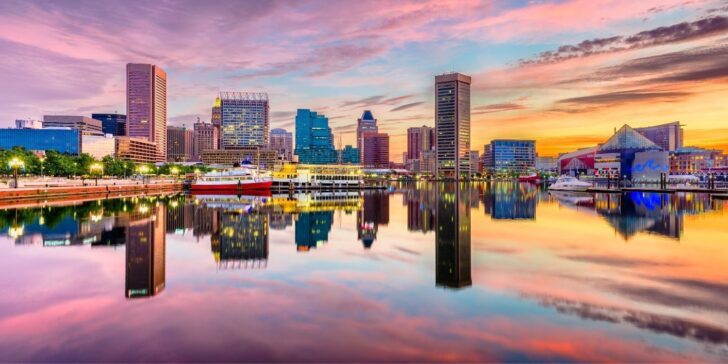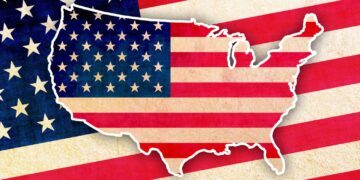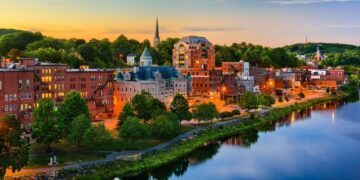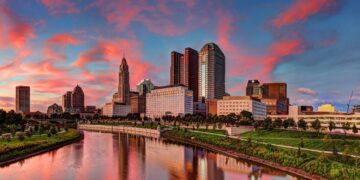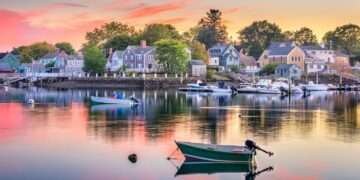Nicknamed “The Old Line State” but also known as the “Free State,” “Little America,” and “America in Miniature,” Maryland was the 7th state to join the United States of America on April 28, 1788.
It has a population of 6,045,680 people (as of 2019), making it the 19th most populous state.
Maryland is bordered by the states of West Virginia, Virginia, Delaware, and Pennsylvania.
With a total of 12,407 square miles (32,133 square kilometers) of land and water, it is the 42nd largest state.
The capital of Maryland is Annapolis, situated in the center of the State.
That’s enough fast facts about the Old Line State for now, though; we’re here to learn some real facts!
Maryland has been inhabited for over 12,000 years!
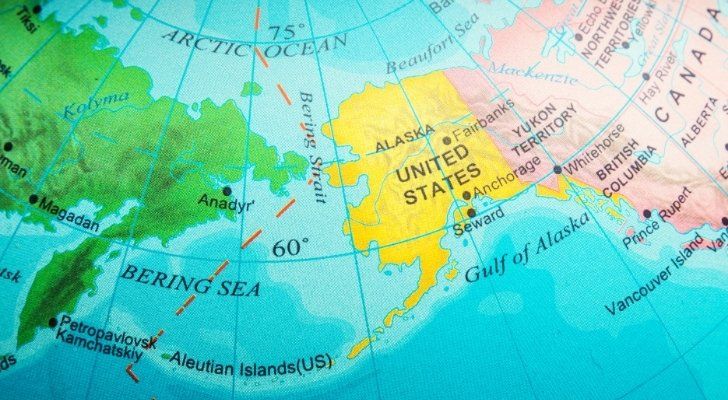
The first people to move into the region now known as Maryland did so at the end of the last Ice Age, around 10,000 BC.
These people were hunter-gatherers who migrated further and further east, eventually crossing the Bering Strait from Russia into North America.
They were semi-nomadic people who migrated around the region as the seasons passed, going wherever the hunting was best.
Around 1,500 BC, these first humans finally began to settle in villages along the coast, where they began to live off oysters and other shellfish found nearby.
By the year 1000 AD, over 40 different villages were spread over the region with a population of around 8,000, all speaking Algonquian.
The first Europeans to explore Maryland were the British.
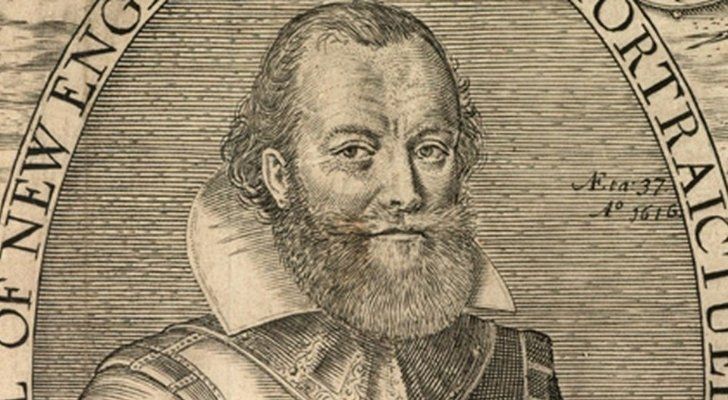
The legendary explorer, soldier, and governor John Smith first set foot upon land within the region in 1608.
There had been previous expeditions by Europeans into the region in 1498 and 1524, although these did little more than sail past the mouth of the Chesapeake Bay before continuing onward.
John Smith was the first to explore and map the region extensively.
Smith’s maps were surprisingly well made considering the time he lived and fortunately have been preserved to this day.
The Colony of Maryland was originally established as a safe haven for Catholics.
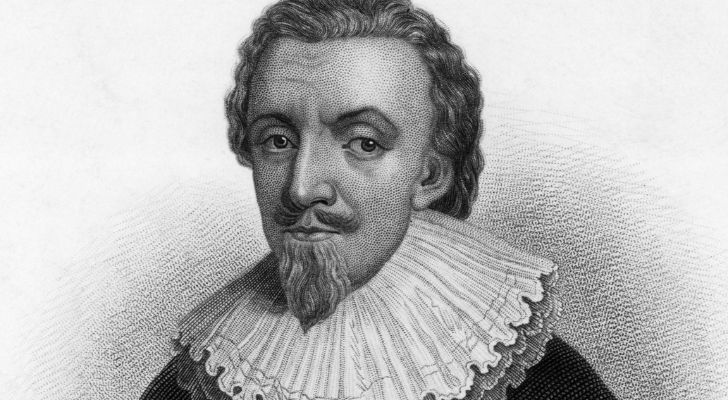
George Calvert, the Baron of Baltimore, petitioned King Charles I for a charter for the territory of Maryland with the hopes that it would be a safe place for the often persecuted followers of the Catholic Church.
His request wasn’t granted before his death in 1632, instead of being granted to his son Cecil Calvert later that year.
Cecil Calvert attempted to follow in his father’s footsteps in the newly founded colony, enacting laws that protected religious freedom among Christian religions.
Despite the Calvert family’s intentions, Maryland today has a lower percentage of Catholics than the national average.
Maryland was named after the queen of England.
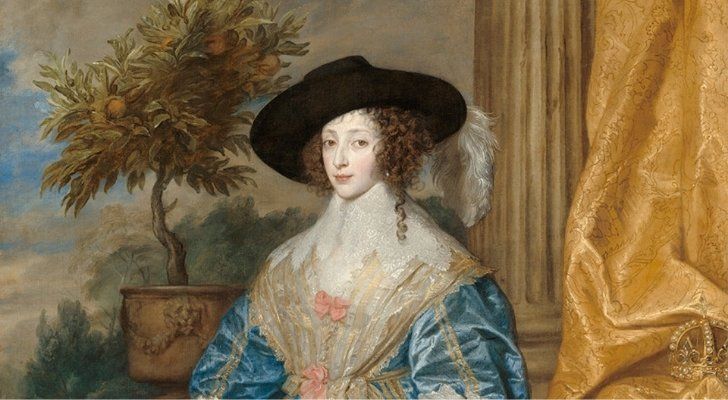
At the time the Maryland charter was written, King Charles I was the monarch of England.
His wife was queen Henrietta Maria, known simply as Queen Mary in England, and the official story dictates that it was she who the colony was named after.
The origins of the colony’s name have been scrutinized by some Catholic scholars, though.
These scholars claim that the colony wasn’t named after Queen Mary after all.
Instead, they believe that the colony was named after Mary, as in the mother of Jesus Christ.
Puritans founded the capital of Maryland.
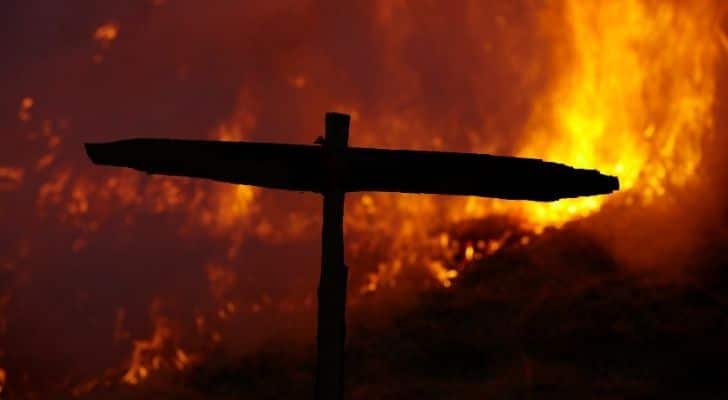
The Puritans were a branch of the Protestant Church who believed that the Church of England should be less Catholic and more Protestant in practice.
Shunned in Virginia, a group of such Puritans moved to the predominately Catholic colony and founded the town of Providence (later renamed Annapolis) in 1642.
These Puritans later revolted against the colony and its government in 1650, founding their own government which outlawed Catholic beliefs.
This revolt lasted until 1658 when Maryland took back their land and reiterated its policy of religious toleration.
In 1689, a Protestant monarch rose to power in England a short while later, and Maryland’s catholic traditions came crashing down.
Many Catholics were persecuted, and Catholic churches were burnt down.
Maryland gained one of its nicknames from the American Civil War.
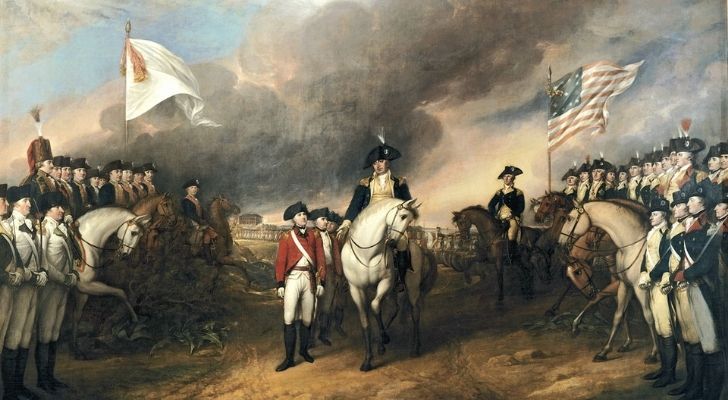
While Maryland was one of the original 13 states that revolted against British Colonial rule, there were no major battles that played out in the new state.
Instead, Maryland gained its nickname through the bravery and fortitude of the fighting men who fought for their new country in the Continental Army.
The Maryland troops formed a regiment of well-disciplined and highly trained men called The Maryland Line.
These brave men both outshone and outlived many other state’s troops, so when George Washington witnessed them in battle, he referred to them as “The Old Line.”
It is from this that the state gained one of its nicknames.
Maryland played a key role in the American Civil War.
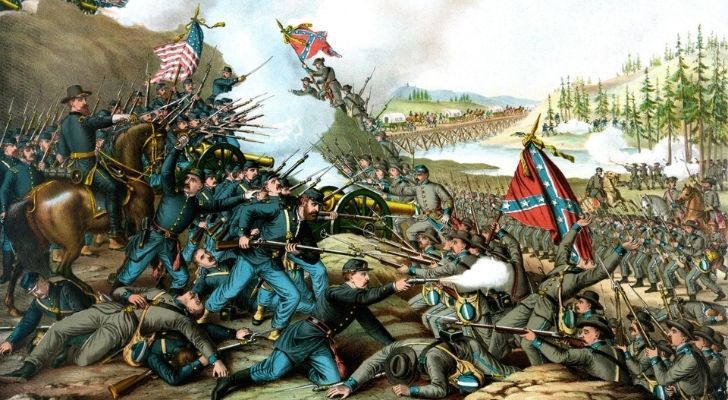
Maryland was considered a border state during the American Civil War, meaning that it was right on the edge between the Union States and the Confederate States.
Like most border states, the opinion of the state’s general public was quite divided on the issue.
Maryland residents involved in the plantation industries were in favor of the Confederates, while small business holders and merchants were in favor of the Union.
Maryland eventually took the side of the Union due to the close proximity of Washington D.C.
The state didn’t have much choice in the matter, though, as Union forces had taken up position by the city of Baltimore and threatened to obliterate it should the state change sides.
Maryland gained another of its nicknames by rejecting Prohibition laws.
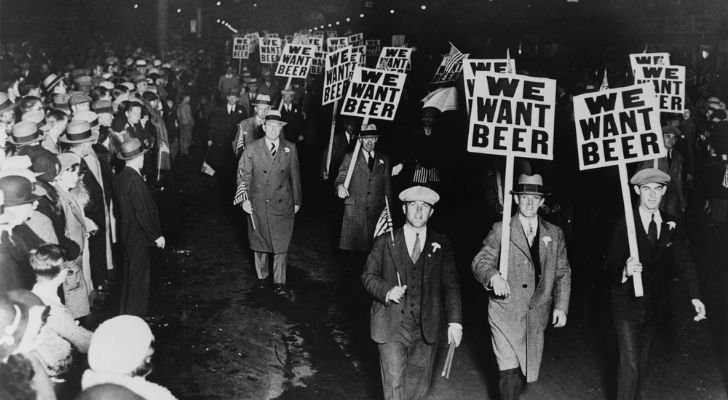
The first time Maryland was referred to as a free state was when the Maryland Constitution of 1864 came into effect at the end of the Civil war.
This new constitution abolished slavery in the state, making it a free state.
It wasn’t until over 50 years later, in 1923, that the state was once again referred to as the free state, and this time, it coined its other nickname as “The Free State.”
Hamilton Owens, the editor of the Baltimore Sun newspaper, actually coined the term after Maryland rejected laws that would have made the purchase, sale, and consumption of liquor illegal.
Maryland is an incredibly geographically diverse state.
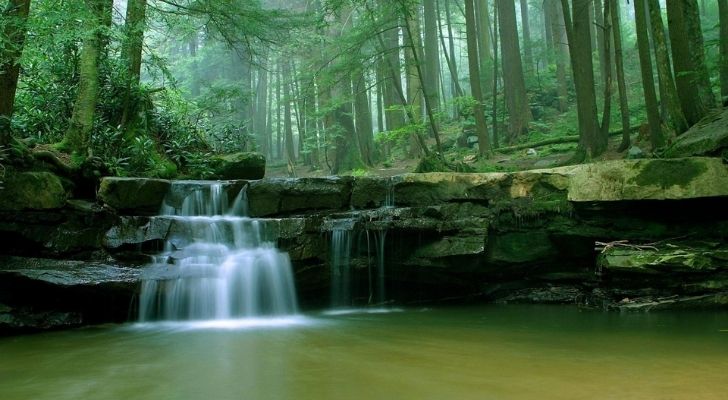
Maryland is graced with pine groves, oak forests, sand dunes, rolling hills, and low marshlands.
The state gained its nickname “America in Miniature” due to this diversity, as the state is said to have pretty much every kind of natural feature found in the US bar a desert.
What it lacks in the desert department, it more than fairly makes up with its abundance of water, whether it’s the Chesapeake Bay cutting through the state or the many rivers and streams that criss-cross it.
Maryland’s state song is a little questionable.
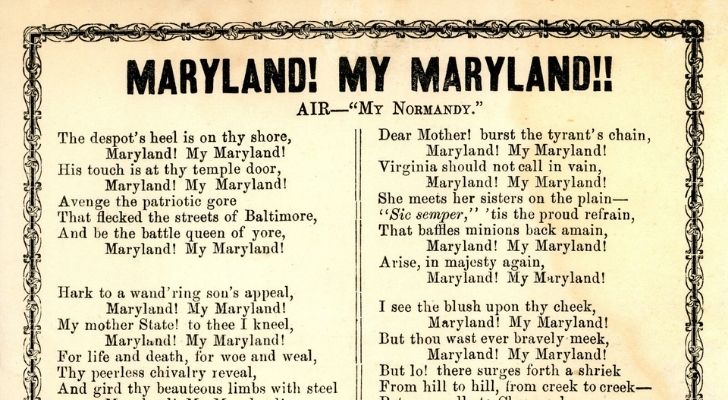
Titled “Maryland, My Maryland,” the song sounds fairly innocent.
It’s when you start to listen to the lyrics that you start to question why such a song would ever be the official state song.
The song’s lyrics originally come from a poem by a Confederate sympathizer who really just wanted the state to secede from the Union.
The lyrics include lines that refer to Abraham Lincoln as a tyrant and the Union states as “northern scum.”
For some reason, the song was made the official state song many years later, in 1939.
One of the greatest TV shows of all time is set in Maryland.
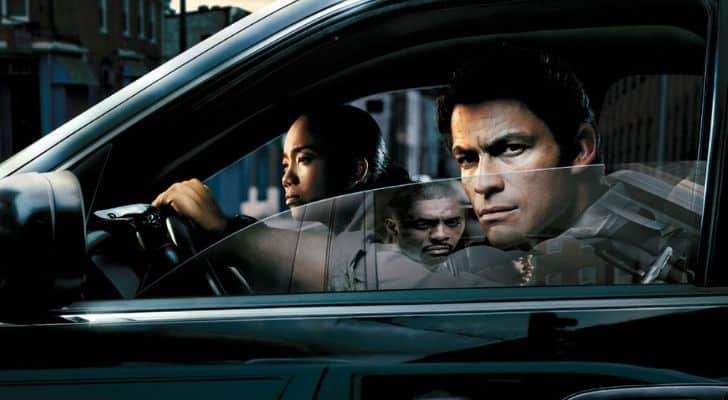
If you were to ask a random person on the street what the greatest TV series ever made was, they generally wouldn’t hesitate to name this daring critique on American society in the 90s.
We are, of course, talking about HBO’s hit 2000s TV show The Wire, which is based in the city of Baltimore.
The TV show took a deep dive into the issues surrounding the US’ controversial War on Drugs and ran for 5 seasons before finishing up in 2008.
The first American to be canonized as a saint lived in Maryland.
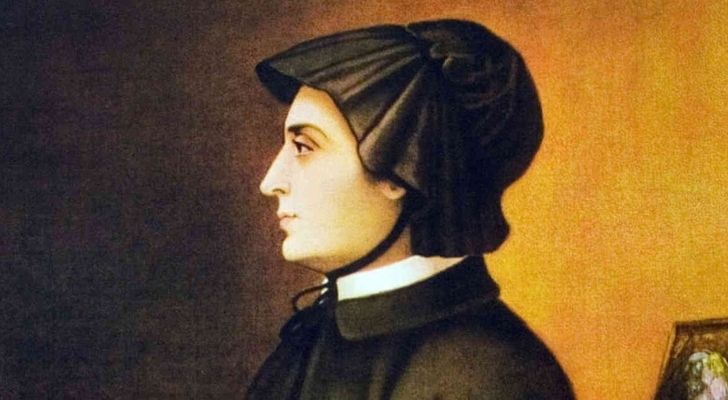
While Elizabeth Ann Seton was born in New York, her actions at a later stage in her life when she lived in Maryland went on to justify her sainthood.
After moving to Maryland, she founded the first Catholic girl’s school in the United States.
She then went on to found Sisters of Charity, a religious organization whose main goals were to care for poor children.
It wasn’t until 1963 that she was canonized for sowing the seeds of charity in the new country, seeds that would later grow into a multitude of charities and organizations spread across the country.
There’s a town in Maryland called Boring, and it’s not very interesting.
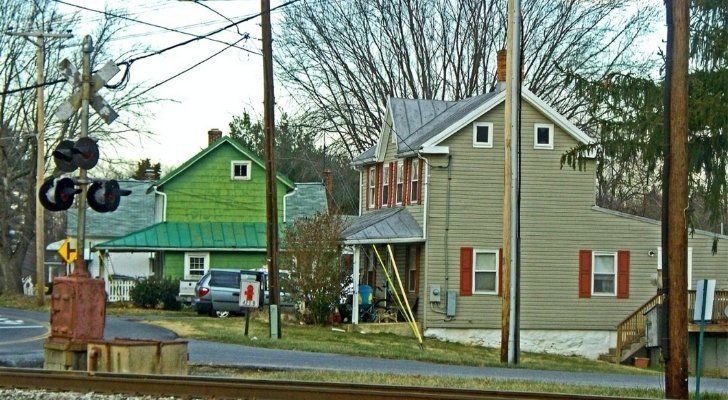
In fact, it’s not even a town. Instead, it’s an unincorporated community in Baltimore County, meaning that it has no local governance of its own.
Other than that, Boring is pretty boring. It has a meager population living in just 40 houses.
There you will also find the Boring Methodist Church, the Boring Post Office, and the Boring Volunteer Fire Company.
Despite its inclination to be anything but interesting, Boring is actually named after a Postmaster by the name of David Boring.
The Ouija board was invented in Baltimore, Maryland.

The concept of communicating with the dead is age-old, and so is the idea that one can communicate with the dead through some form of a board with letters on it.
The earliest variants of these in the US were called talking boards, and they rose to popularity in the late 19th Century.
Elijah Bond filed a patent for his own variant of the board in 1890, and then an employee of his called William Fuld took the idea and improved upon it, naming it an “Ouija Board” in 1901.
Fuld claimed that he himself had invented the entire concept, and his name became synonymous with the idea of Ouija.
Fuld originally claimed that “Ouija” meant “good luck” in Ancient Egyptian before deciding that it was instead a combination of the German and French words for “yes.”
The official state sport of Maryland is jousting.
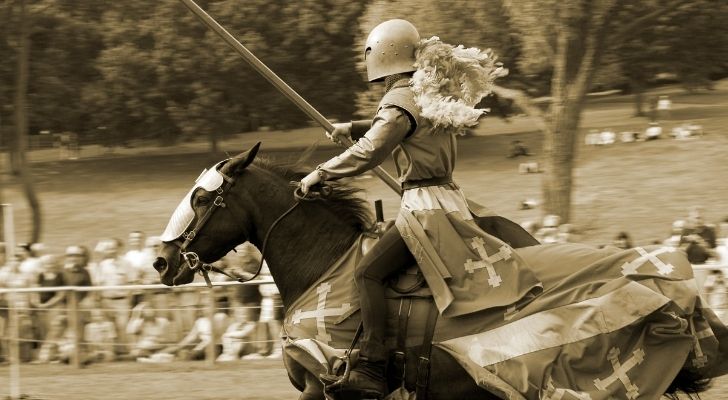
You heard that right, jousting.
You know, it’s that thing that people used to do back in the age of chivalry when knights would ride around saving fair maidens from dragons.
The modern variant of jousting sees contestants compete in a friendly environment, much unlike the sports bloody past.
Maryland has more than one official posh sport, though, with Lacrosse as the state’s official team sport.
During its colonial days, Maryland was deeply divided on religion, despite being a supposed safe haven with laws on religious tolerance.
Later during the American Civil War, Maryland was divided again, this time on the line between the United States and the Confederates.
Nowadays, the main divide you can find in Maryland is the Chesapeake Bay, which pretty much splits the state in two!

